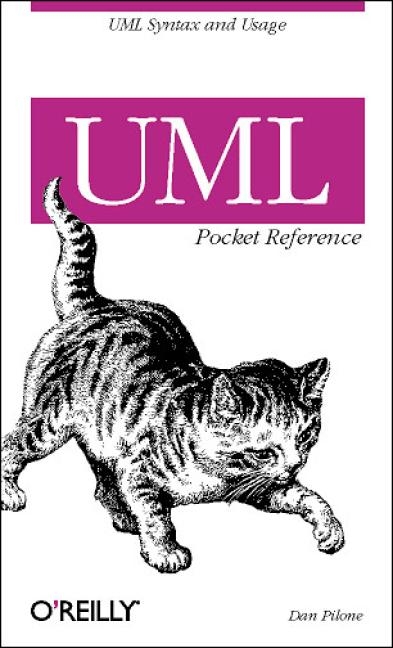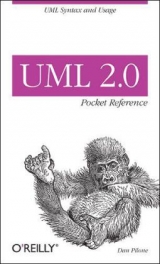
UML Pocket Reference
O'Reilly Media (Verlag)
978-0-596-00497-2 (ISBN)
- Titel erscheint in neuer Auflage
- Artikel merken
The Unified Modelling Language (UML) is one of the most important languages for anyone in the software industry to know. The UML is a visual language enabling architects, designers, and developers to communicate about design. Seemingly simple on the surface, the UML is a rich and expressive language, with many visual syntactical elements. It's next to impossible to memorize all aspects of the UML. Just as a writer might require a dictionary to work with the spoken word, so too do UML practitioners require a dictionary of sorts. In this book, you'll find information on UML usage, and also on the symbols, line-endings, and syntax used for the following diagram types: class diagrams; component diagrams; behavioural diagrams; sequence diagrams; statech art diagrams; object diagrams; deployment diagrams; use case diagrams; collaboration diagrams; and activity diagrams.
Dan Pilone is Rational Certified in OOAD, RUP, and Rose. His previous employer was a Rational Partner and Dan has taught (formally as well as informally) quite a few UML classes for Hughes, ARINC, UPS, Georgia Systems Operation Center (GSOC), and the Naval Research Laboratory (NRL). As a software architect for clients, Dan has made extensive use of UML (in all views of the architecture) to help convey information to management, developers, team leads, and requirement folks (doing use case analysis in a UML-like fashion). Dan is also Sun J2EE Enterprise Architect certified, which required him to submit his own EJB designs using UML sequence, class, and collaboration diagrams. Dan has worked at Hughes Inc. developing a satellite communication system for which they did real-time UML modeling, and also large numbers of State Diagrams to model the acquisition/control stages.
Introduction Static Modeling with UML UML Classifiers Stereotypes Notes Tagged Values Constraints Class Diagrams Classes Attributes Operations Packages Classifier Relationships Object Diagrams Objects Object Stereotypes Object Modeling Component Diagrams Components Component Modeling Deployment Diagrams Nodes Node Modeling Behavioral Diagrams Use Case Diagrams Use Cases Actors Use Case Modeling Use Case Realization Use Case Documents Sequence and Collaboration Diagrams Collaboration Diagrams Sequence Diagrams Statechart Diagrams States Actions and Activities Transitions Composite States Sync States Concurrent Transitions Activity Diagrams Action States Transitions Subactivity State Decision and Merge Call States Swimlanes Participating Objects Signals Index
| Erscheint lt. Verlag | 29.7.2003 |
|---|---|
| Zusatzinfo | index |
| Verlagsort | Sebastopol |
| Sprache | englisch |
| Maße | 114 x 179 mm |
| Gewicht | 92 g |
| Einbandart | kartoniert |
| Themenwelt | Mathematik / Informatik ► Informatik ► Programmiersprachen / -werkzeuge |
| Informatik ► Software Entwicklung ► Objektorientierung | |
| ISBN-10 | 0-596-00497-4 / 0596004974 |
| ISBN-13 | 978-0-596-00497-2 / 9780596004972 |
| Zustand | Neuware |
| Informationen gemäß Produktsicherheitsverordnung (GPSR) | |
| Haben Sie eine Frage zum Produkt? |
aus dem Bereich



